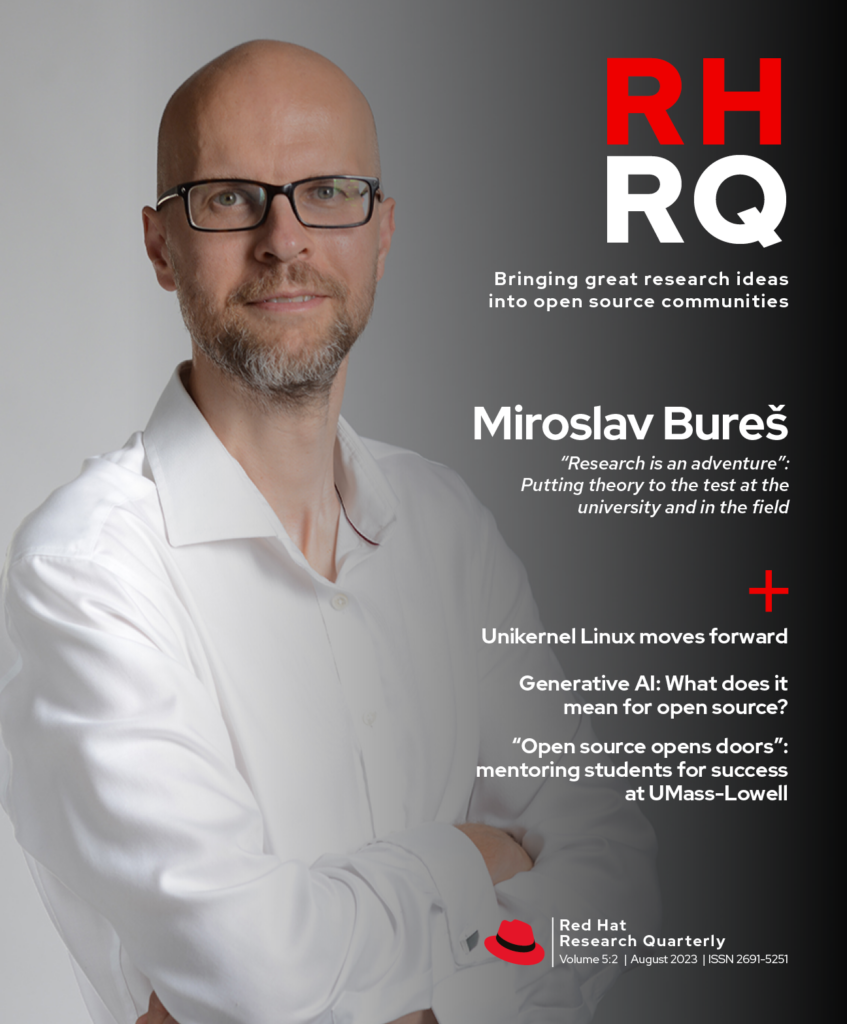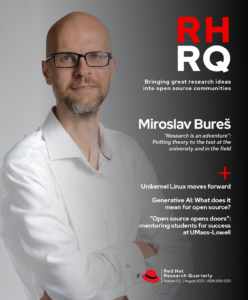Research- and leadership-focused support is getting results in the push to grow and diversify the engineering talent pool.
The technology industry has largely embraced the theory that diversity drives innovation, but in practice the talent pipeline continues to be leaky. Even when high school preparation is equal, students of color are more likely than white students to leave STEM majors, and half of women in tech leave the field by age 35 because they find the environment inhospitable. That’s one reason Red Hat Research participates in the RAMP program (Research Academic and Mentoring Pathways to Success) at the University of Massachusetts at Lowell, an excellent model for how industry and academia can collaborate to accelerate change.
RAMP is a summer program for incoming UMass-Lowell students and select high school students interested in science and engineering. RAMP focuses on increasing the enrollment, retention, and success of groups underrepresented in engineering, but it’s also the foundation of a network of faculty and mentors that connect students to people and opportunities that encourage them to keep going. From my experience, I know that participating in research with a mentor as an undergraduate can be transformative. Just discovering that it was possible sparked an interest that became my career at a time when my alma mater (MIT) was under scrutiny for being unfriendly to women in science.
I learned about the RAMP program while working with UMass-Lowell faculty on collaborative projects for Red Hat Research. The RAMP program, along with the SoarCS program for incoming computer science students, was just beginning, and both seemed like a perfect fit for our mandate to build a more robust talent pipeline for research through university relationships. The leader of the RAMP program, Kavitha Chandra, received her PhD from UMass-Lowell and is currently the Associate Dean for Undergraduate Affairs in the Francis College of Engineering. A professor of Electrical and Computer Engineering, she collaborates with industry partners like Red Hat and faculty from multiple disciplines to provide mentorship and leadership training for underrepresented students in engineering.
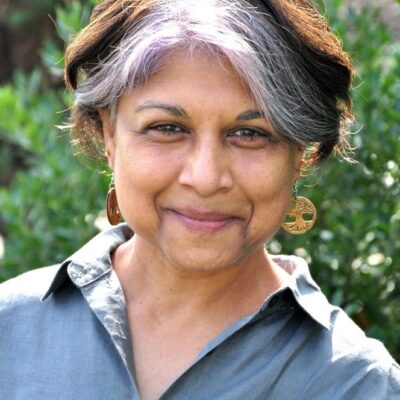
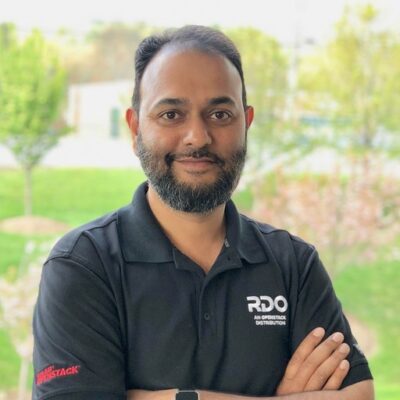
Several Red Hatters, alongside representatives from many other companies, have served as mentors in the RAMP program, including Rashid Khan, Senior Director of Networking Services, who also participates in research at UMass-Lowell and the Red Hat Collaboratory at Boston University. Khan got his BS in electrical engineering and mathematics from UMass-Lowell in 1996, and a Masters in Digital Signal Processing from Tufts University, and has stayed active as an alumnus through the university’s Career and Co-op Center, coaching students on technical interviews, and by helping to create the UMass-Lowell open source lab.
Early role models
“What you see at a young age will inspire you toward what you want to be later in life,” Professor Chandra said. Chandra watched her father work to attain his PhD and start his career while living in Alabama and raising a family and saw firsthand how vital mentorship is to success. Seeing him overcome the challenges he faced as a student and immigrant father of three young children with the benefit of consistent support motivated Chandra along her own academic path. It also spurred her desire to engage students from underrepresented minorities. “We were in the South in the seventies, and there were not many people who looked like us. My father’s professor and his wife really made it their mission to help us out, and I saw that and was inspired by it.”
Chandra took this lesson to building a mentorship program: get to students as young as you can. For many students, the path to a successful career as either an engineer or an academic is unfamiliar, making it easier to give up when doubts arise. And if students don’t see people with similar backgrounds working in engineering fields in middle or high school, they may not even consider it a possibility. There’s also a chain reaction of missed opportunities that can be limiting later. For example, even an excellent student will struggle for admission to competitive graduate programs without undergraduate research experience. “Once students start courses and internships, their lives are all about doing their jobs,” Chandra said. “We need to reach them before that.”
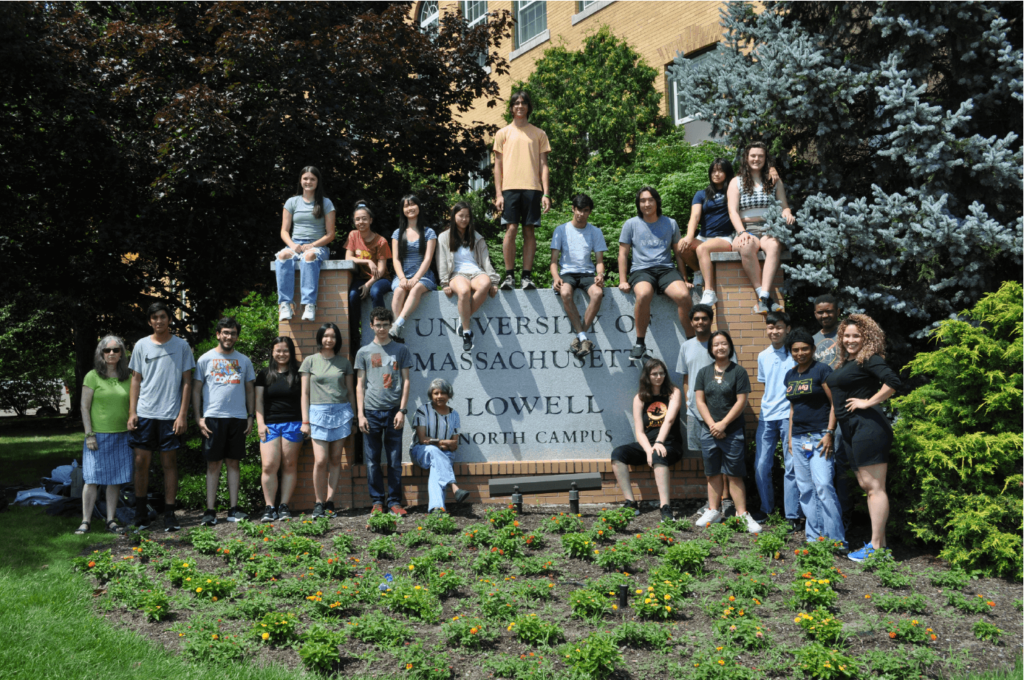
Khan also has an immigrant’s perspective on the importance of mentorship, having moved to the US at the age of 19 to attend UMass-Lowell. “I have a soft spot in my heart for Lowell, not only because I went there, but because I know the value of that education for the many first-generation college students who go there,” Khan said. Khan pointed out that this group of students brings in socioeconomic diversity as well as ethnic and gender diversity, which is critical to expanding access to education: “These are the students who can’t afford an SAT course or an SAT retake, so while they may be smart and skilled they can miss opportunities just because of financial barriers.”
Giving back is also a significant motive for Khan, who says Lowell gave him the confidence and education necessary to thrive in a challenging and profitable career. “It’s not an elite private university, but the students and faculty are phenomenal. The friends I graduated with are CEOs, entrepreneurs, and leaders in banking, nuclear engineering, and so on. Lowell serves a lot of families who want to give their kids a great education but can’t afford an elite college, and I want to contribute to that success story and help out those families.”
Beyond access
One philosophy behind the RAMP program is that access is necessary but not sufficient for increasing diversity. Chandra and Khan each emphasized the variety of barriers that students face. For example, young women often find that they are the only woman in a class of 30 or 40. Especially if they’ve been acculturated to certain gender-based roles, they may be hesitant to participate vocally. Chandra named not asking questions as one of the biggest barriers for students to overcome once they’ve gotten a seat at the table, especially if they want to pursue a leadership position. “You aren’t questioning things, or, if you do, every question is prefaced with ‘this question sounds stupid but…’” Chandra said. “Why do you have to use that? They don’t see any man saying that kind of stuff. Just ask the question!”
Khan also noted that during his undergrad years, he watched the attrition of women from engineering programs in real time: “At the start of my program, there were a handful of women in electrical engineering, but by the time I graduated, there was only one. The side effect now is that, 25 years later, there are still not enough women in engineering. I realize now that if they had had a mentor to encourage them to persevere or an example of women in leadership, more of them might have stayed.”
You can’t hire someone from an underrepresented background and consider the job done.
Chandra and Khan both point to one-on-one mentorship and long-term relationships as the most critical factors in moving from access to inclusion. “Continuity is key. The only thing that works is that process of mentoring, where they’re in your lab day in and day out, and you’re talking to them about their struggles and helping them understand why they have to continue,” Chandra said.
Chandra emphasized that the same is true in industry: “You can’t hire someone from an underrepresented background and consider the job done. There have to be other elements, like connecting them with the right people who will recognize the barriers and the cultural issues they face and make them see that those obstacles are not their fault.”
Open source research
The most crucial goal of the RAMP program is to encourage students to be curious—so curious that they aren’t just listening but are driven to ask questions and find ways to engage. Open source development and engineering research have proven an excellent way to provoke this response.
While discussing why open source is such a powerful tool for students, RAMP participants and students agreed on a crucial factor: open source opens doors. Khan explained, “All you need is a laptop and an internet connection, and it can open the whole world to you. I have had students contact me from remote parts of the world who are working on things that are next-next-gen. A young woman contacted me from a university in a developing country with a question about working on 100 gigabits a second, while we were working on 25 and 40 gigs. With proper guidance from teachers, she reached out to someone who could help her find her way through the open source community. This isn’t possible with proprietary hardware or software.”
Chandra added, “I’m dealing with students, especially young women, who are not looking at computer science as a field because they don’t see themselves writing code alone in a corner. Open source gives them many ways to participate, to have an impact in a community, and to contribute.”
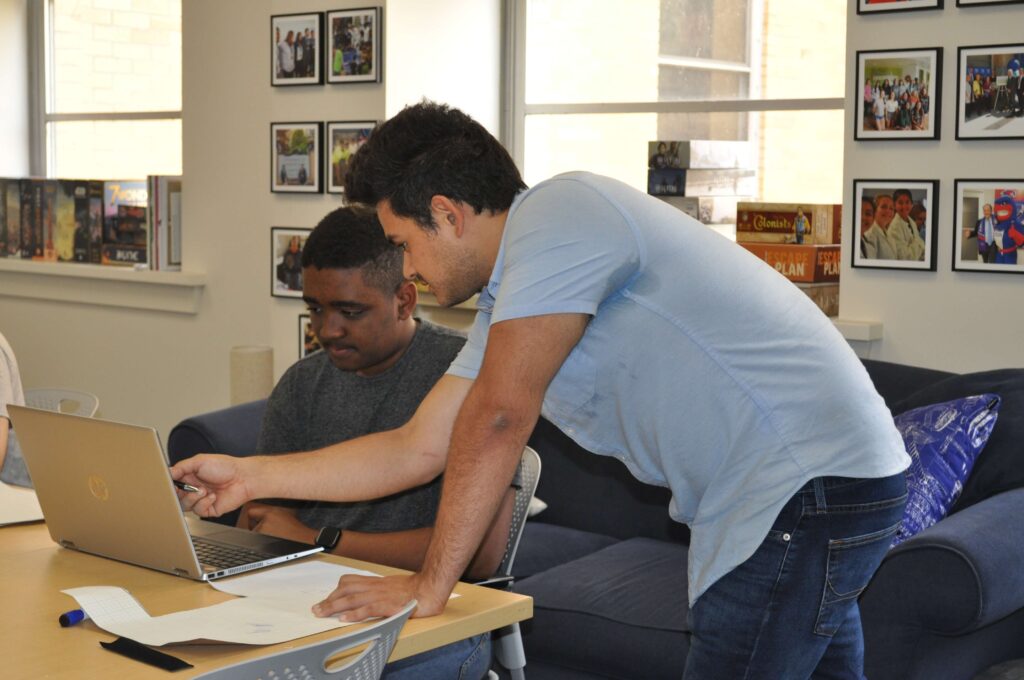
And because those communities are inherently open, students have the opportunity to share their work and get full credit for their accomplishments. A student working for a defense contractor may not be able to publish their work at all, or they might have to conceal some of the details. By contrast, Khan said, “In open source, as soon as you work on something, it’s public. You can publish a paper on it, make presentations about it, go to conferences about it, and your code is there forever. People will iterate on it, improve on it, but your name remains in the chain of contributors.”
Those accomplishments have real consequences for students looking for work or applying to grad school, according to Chandra. “My goal is that students will be able to say something more than ‘I did an internship.’ Instead, they can say, ‘I participated in this open source conference,’ or ‘I made a poster with the professional group I worked with’—they have real artifacts that help them stand out.”
Industry engagement
When asked why connecting with engineers in industry is essential at an early stage, Chandra laughed. “I think from the students’ perspective, university professors don’t have real jobs. They look at the lives of professionals in industry as something real.” Only a fraction of students will go on to academia, but at the same time, most students have a very limited notion of what an engineer does. Many have a stereotype that doesn’t view engineering as a very interdisciplinary, inclusive field. They don’t realize that engineers work in many different fields, including unexpected areas like the social sciences, education, and the humanities.
“A lot of students come in thinking that software engineers are stuck in a cubicle in front of a screen for 12 hours a day, six days a week,” Khan confirmed. Working with industry shows them the practical implications, like creating the next generation of telecommunication, healthcare, defense, robotics, and automotive technology. “It surprises them to realize that software actually runs somewhere. I give them the example of social media, where you can flip through high-quality pictures one second at a time, and the next picture is always preloaded, and everything is cached for you. All of that is enabled by open source networking. When they get that and say, ‘Oh yeah,’ that is a beautiful moment.”
Chandra said that when students understand what working as a developer or engineer really means, they get much more excited. “They want to know how future technologies and engineers can work in areas they didn’t use to associate with computer science. If we can show them this vision, there will be a better, more diverse pipeline of students who want to come into this field. There’s just so much need for more people with all different backgrounds and interests.”
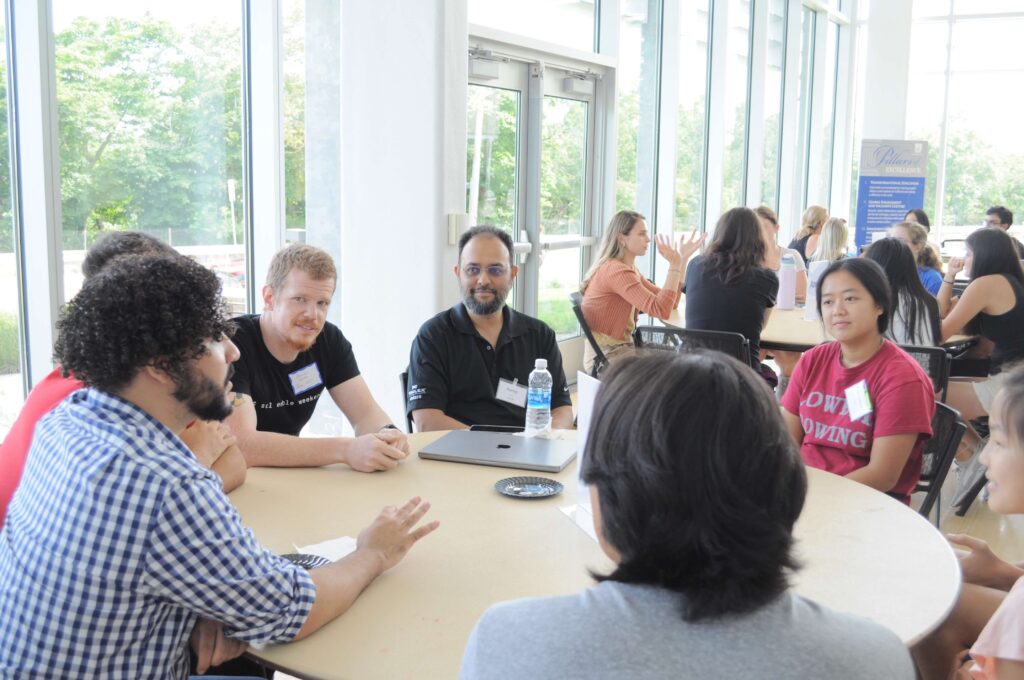
Khan reported that, from his perspective, the RAMP program has increased the ethnic and gender diversity of the student-to-employee pipeline. “Linux and Red Hat are not as widely known as a company like IBM outside academia,” Khan said. RAMP and our other student programs at UMass-Lowell help us introduce Red Hat and the concept of an open source software company, which is totally new to many of them.” Students’ work in industry also exposes them to a company’s culture and what it’s like to collaborate with some of the brightest minds in technology, whether that’s at Red Hat or another company.
Launching the next generation
Students in the 2023 RAMP program worked on projects related to the theme “Engineered systems and cybersecurity: from requirements to verification.” Over the course of the six-week program, students complete 12 modules focused on the relevance of physics, math, computing, and human factors in engineering design, but most of their time is spent working on their projects and meeting with faculty and industry mentors. Our group of 10 Red Hat mentors met with students weekly to talk about technical subjects like operating systems and systems engineering, software vulnerabilities and hacking, and AI/ML and neural networks. We also talked about what’s exciting and what’s challenging about being an engineer, from coding to managing teamwork.
At the end of the session, students presented their projects to peers and mentors, then revised and finalized them according to their feedback.
This year’s cohort of students split into groups to complete three projects:
- Modulation exploration: analyzing the transmission of audio signals using higher, typically inaudible frequencies, understanding the mathematics of amplitude modulation, and using analog and digital systems to make measurements and validate the theory
- Operation MANGO (Magnetic Alarm Network to Gate Outsiders): developing defensive solutions after assembling an alarm system and exploiting a variety of attack vectors students developed to bypass it
- Rise of the machines: the hidden cost of automation: researching and testing the advantages and disadvantages of AI automation, especially its impact on the job market and the environment
Professor Chandra brought UMass-Lowell student Anna Schmidt, one of many undergraduates who have found a launching pad at RAMP, into our conversation. Anna started working with a Red Hat mentor during the pandemic lockdown, building widgets using a TI microcontroller system—a good fit for Anna’s love of mechanical work. She also worked on learning Python but wasn’t sold on coding as a full-time career. “What I want her to understand is that the way you code and the way open source development works is changing significantly,” Chandra said. “You don’t need to know the nitty-gritty of every language to be able to contribute.”
You can reach out to Professor Chandra (kavitha_chandra@uml.edu) or to me (hdempsey@redhat.com) to learn more about getting involved.
In 2023, Anna interned at the healthcare tech company Abiomed, where her mentor noticed that when she first arrived, she was quite shy and had difficulty looking people at work in the eye. After six months, however, she was out front confidently presenting her work to Abiomed engineers. “They were so impressed with her,” Chandra said. “Not just because of the work she did, but because of the confidence she gained. That’s just one example of how we can make that sort of difference when people stay involved and connected with the program.”
Chandra said that one of the best things students get from the program is the community they build in those six weeks of RAMP, which then sticks with them for the next four years or even longer. That’s a critical way of providing continuity when resources are scarce. Chandra acknowledged that finding enough mentors can be tricky, especially among younger academics focused on building their careers. “If they came out of an environment where they needed and benefited from early, close mentoring, they see the value of it,” Chandra said. Otherwise, dismissing the importance of mentorship programs like RAMP is too easy. “People will ask, ‘Why do we need to do this?’ and then ask, ‘Why haven’t things changed in 35 years?’” Chandra said.
One of Chandra’s goals is to keep building a network of middle school teachers, high school teachers, graduate students, university faculty, and industry professionals who share a vision for mentoring students through the challenges faced by students underrepresented in science and engineering. In 2022 a team of researchers led by Chandra received two grants from the National Science Foundation to foster this work. “Connecting people with similar experiences is the key. Anyone interested in looking at these issues in a disruptive way and understanding the vision, come connect with us,” Chandra said.
ACKNOWLEDGEMENTS
In addition to Kavitha Chandra and Rashid Khan, RAMP participants Michael Santana, Salvatore Daniele, Anna Schmidt, and Rahul Bajaj contributed their thoughts to this article. Other Red Hat associates who shared insights on everything from machine learning algorithms to Red Hat tattoos with students in the 2023 RAMP summer sessions included Aaron Conole, John Westcott, and Wen Liang. To the 2023 RAMP students in the Red Hat subgroup—Aryaman, Luca, Nischay, Jacqueline, Nell, Neel, Katrina, Andrew, Antonio, and Janie—thanks for a great summer!


